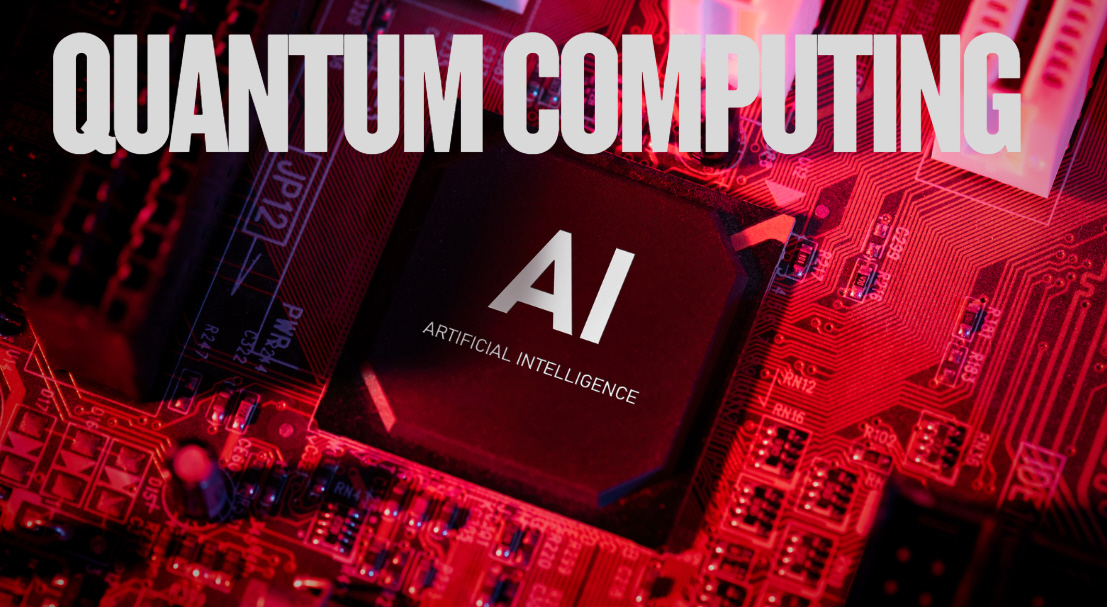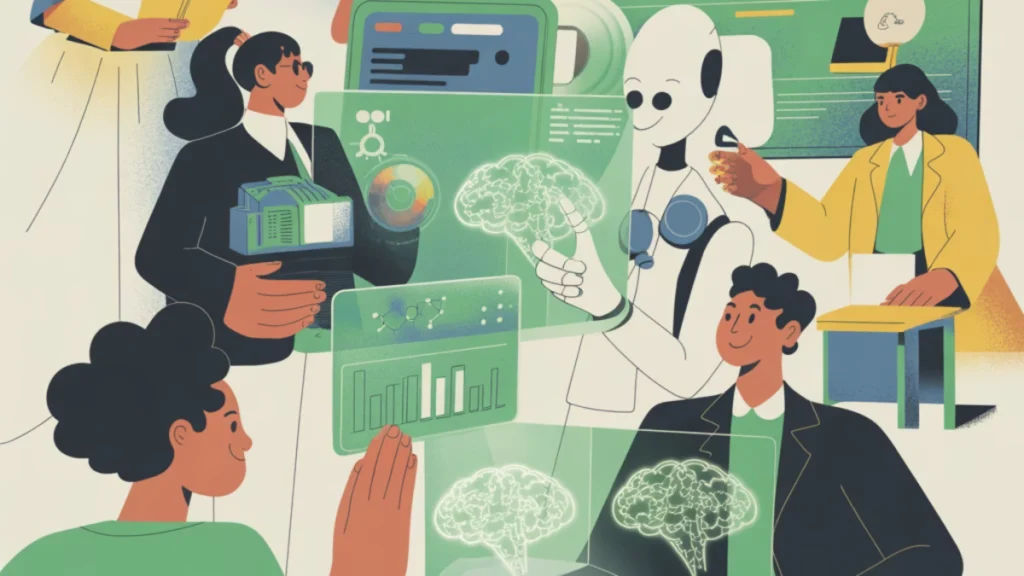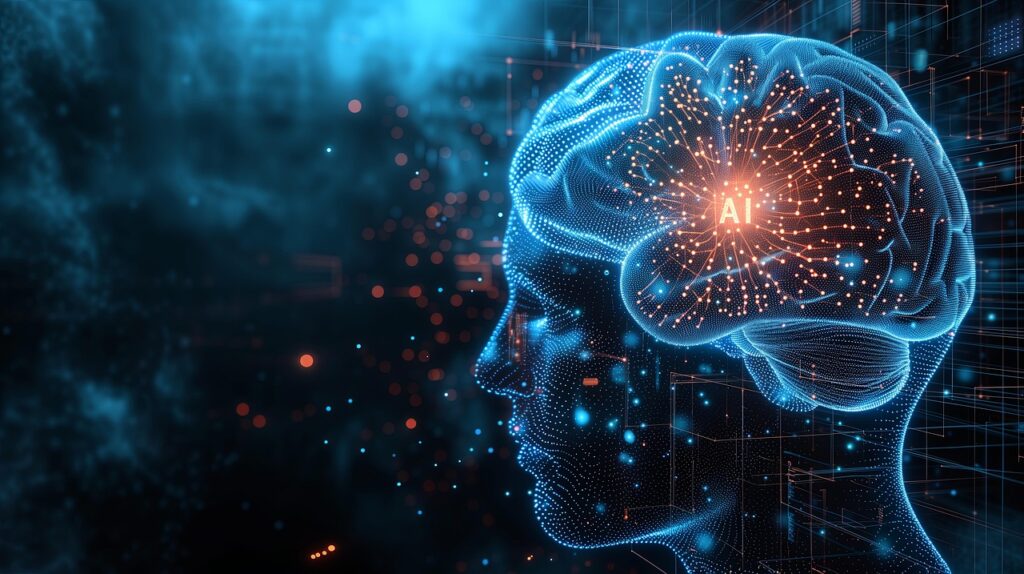What Is So Special About Quantum Computing AI?
Imagine a computer that doesn’t just process data sequentially but explores every possible answer at once. This is the promise of quantum computing, and when paired with artificial intelligence (AI), it has the potential to solve problems previously deemed impossible—from discovering life-saving drugs to designing materials atom-by-atom.
However, realizing this potential requires overcoming immediate hardware barriers. This article explores the challenges of data loading and physical stability, which limit quantum computing artificial intelligence (QCAI) today, and introduces a sample of current hybrid AI solutions.
The Data Loading Bottleneck
Advanced AI models, like large language models (LLMs), require massive computational power and data. Classical machine learning (ML) models are fast because standard hardware components (such as CPUs and GPUs) are highly optimized and tightly linked for rapidly moving data around.
Quantum machine learning (QML) faces a major challenge referred to as the data loading bottleneck. Mapping classical data onto the qubits’ quantum states (the unique properties) is a slow process and requires specialized, high-density components, and a lot of them. Ultimately, this means classical machine learning models are often faster, easier to access, and more cost-effective for practical tasks.
Hardware Barriers
(1) The interfaces, or communication links between the standard classical data storage and the quantum processor are choke points (traffic jams) in the process, and a potential source of signal corruption due to the disparity in processing speeds.
(2) The physical environment in which quantum computing occurs is extremely sensitive to heat (and drastic changes in temperature), vibrations, and changes in electromagnetic fields. Qubits can hold their coherence for a very short duration. Any environmental disturbance can cause decoherence, destroying the qubit’s ability to sustain superposition, existing as a ‘0’ and a ‘1’ simultaneously.
The journey to full quantum computing AI is not a sudden leap. Instead, it’s a gradual process involving Hybrid AI, which is the current state where classical computers and quantum processors work together to solve problems.
Quantum AI: The Next Frontier
Quantum computing and artificial intelligence represent a fundamental new way of computing. Classical computers use bits (either a ‘0’ or ‘1’). Quantum computers use qubits which leverage a superposition to be both a ‘0’ and ‘1’ simultaneously and every state in between. Where classical artificial intelligence is a sequential process, quantum computing AI can simultaneously explore a massive number of possible solutions at once, leading to an exponential speedup for certain problems.
Loss-less Interfaces: The Foundational Requirement. Quantum Random Access Memory (QRAM) is designed to fix the slow data loading problem by making data ingestion dramatically faster—changing its efficiency from slow (linear) to fast (logarithmic). This transition is fundamental, as it unlocks the exponential speedup for the overall quantum computing process. Beyond data input, the concept of a loss-less interface is vital for qubit stability. This loss-less interface is necessary to maintain qubit coherence and eliminate signal noise and corruption caused by the massive temperature gradients inherent in moving control signals between classical (room temperature) systems and the super-cooled quantum processor.
Once data is successfully converted into its quantum state, the advantages of specialized quantum AI algorithms become apparent.
Beyond Classical Limits: Where Quantum AI Excels
Quantum computing AI can solve problems that are highly complex and beyond the capacity of classical artificial intelligence. Here are a few examples.
Novel Drug and Materials Discovery: Quantum computing AI can simulate molecular and subatomic interactions—currently not possible with classical computers. This allows researchers to model proteins and chemicals with unprecedented accuracy, potentially reducing the time needed to test billions of drug candidates from years to days.
Precision Material Design: Similarly,quantum computing AIcan help scientists design and ‘virtually’ construct new materials atom-by-atom to create highly customized properties. Examples include developing lighter, strong composites for aerospace and transportation, or creating ultra-durable, heat-resistant alloys for advanced manufacturing.
Proactive Maintenance and Failure Avoidance: Quantum machine learning models are uniquely suited to analyzing large amounts of complex, high-dimensional sensor data from industrial equipment. They can identify subtle, pre-failure signatures that classical AI might miss, enabling proactive maintenance that significantly reduces costly unplanned downtime or catastrophic failure.
Conclusion
The core capability of quantum computing artificial intelligence is its ability to overcome the limitations of classical processing as it is uniquely positioned to solve highly complex optimization and simulation challenges that are currently impossible for conventional AI to solve. Developing necessary hardware solutions, such as loss-less interfaces for all critical data and control signal transfer points, is essential to realizing full quantum computing AI.





